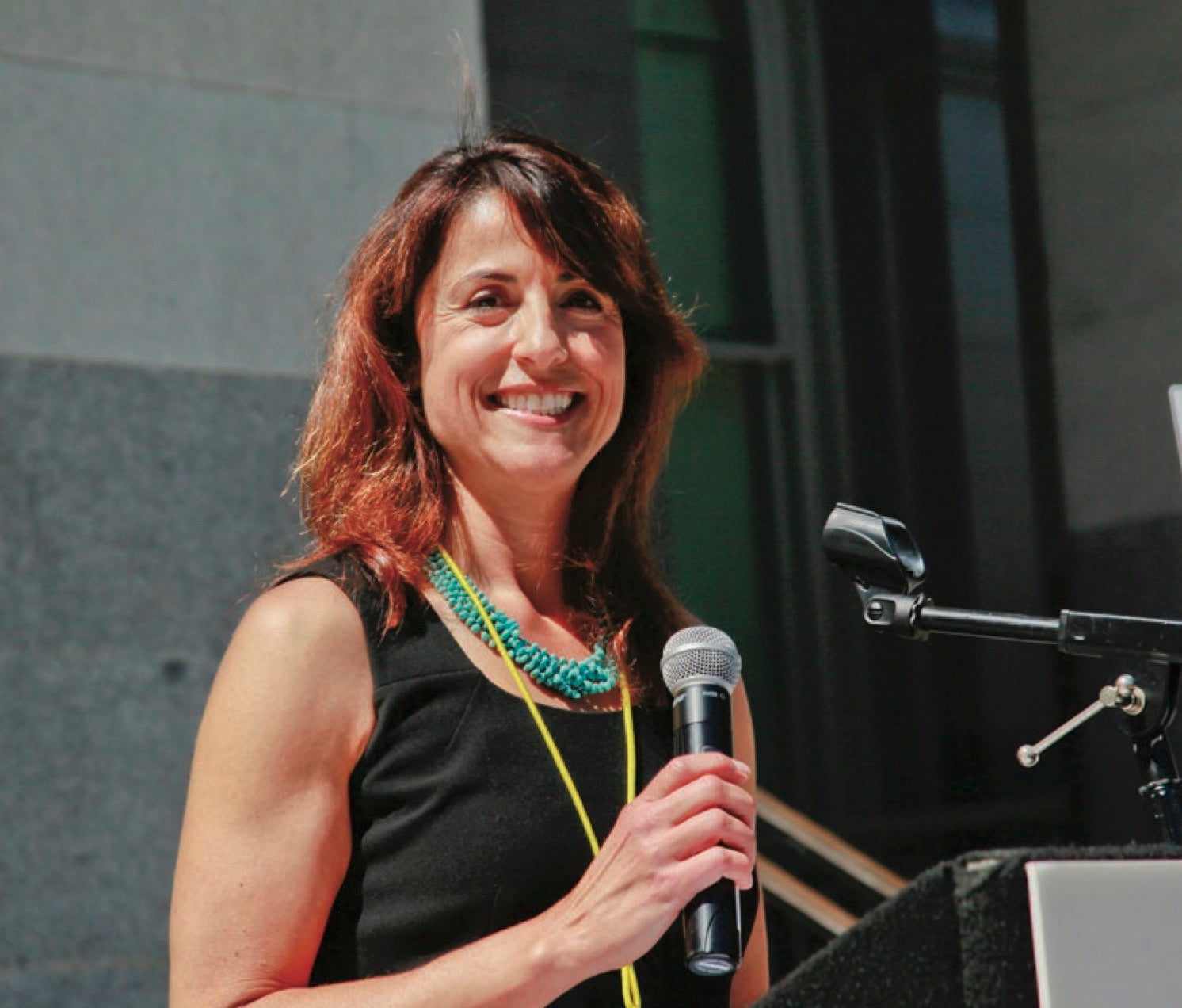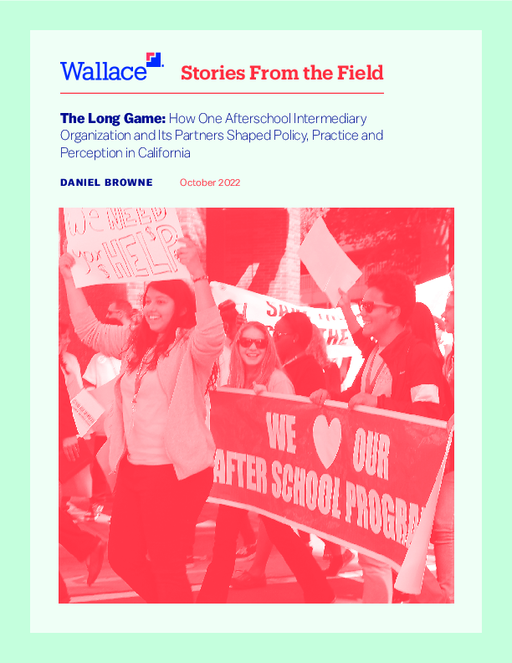Breadcrumb
- Wallace
- Reports
- The Long Game How One Afterschoo...
The Long Game
How One Afterschool Intermediary Organization and Its Partners Shaped Policy, Practice, and Perception in California

- Author(s)
- Daniel Browne
- Publisher(s)
- The Wallace Foundation
Summary
How we did this
The author, who has written widely about out-of-school-time programs and systems, interviewed the longtime leader of the Partnership for Children & Youth, Jennifer Peck, and numerous others involved with out-of-school-time efforts in California over the years.
With roots going back to the late 1990s, the Partnership for Children & Youth (PCY) has earned a national reputation for boosting out-of-school-time programs in its home state of California. This Wallace Story From the Field documents key moments in the group’s history. It also provides lessons for organizations advocating for out-of-school-time (OST) programming in their states.
The spur for the article was, in part, a milestone for PCY. In 2022, its founding executive director, Jennifer Peck, stepped down from the post.
PCY’s Accomplishments
PCY is a statewide “intermediary.” That means it works with city agencies, private funders, schools, programs, and others to improve out-of-school-time programming. It sits at the intersection of policy, practice, and public awareness, Peck says. With that in mind, the piece details the organization’s work in those three areas over the years. Some accomplishments include:
- Helping under-resourced afterschool programs apply for funding from the then-new federal 21st Century Community Learning Centers program
- Working to shape model high-quality summer learning programs
- Influencing state legislation on matters like per-child funding rates and program accountability metrics
- Helping to implement Proposition 49, the afterschool measure championed by California’s then-governor, Arnold Schwarzenegger
- Advocating for unprecedented financing for OST programs to help children cope with the toll of the COVID-19 pandemic
Lessons Learned Along the Way
The piece discusses important lessons learned over the years, such as:
Partnerships are critical. PCY’s efforts rely on strong alliances with everyone from state government officials to local school districts. That’s required building bridges to sectors that have a bearing on OST programming.
Support is a two-way street. Improving OST has required bringing together different collaborators so each can provide its particular expertise. PCY has been able to provide structure, strategy, and political smarts, for example. Programs have brought the support of students, families, and others with a stake in OST.
Big-picture thinking is essential. Intermediaries need to see that a long-term strategy is essential to bringing about change. At the same time, they must be able to shift gears swiftly in response to changing conditions.
Focus on strategic communication. In PCY’s early days, that wasn’t much of a consideration. But the focus changed as it became more important to raise awareness of the value of summer learning.
All the lessons are in service to what Peck discovered about OST programs when she herself participated in them as a youngster. “The exposure to people and places, the opportunities to build social capital, build skills and develop relationships, that's what it’s all about,” she says.
Key Takeaways
- A Wallace Story From the Field examines how the Partnership for Children & Youth earned a national reputation for boosting OST programming in its home state of California.
- Key lessons from the Partnership for Children & Youth’s history include the importance of partnerships, a long-term strategy, and strategic communication.
What We Don't Know
How should organizations go about the process of forging partnerships with other stakeholders?

